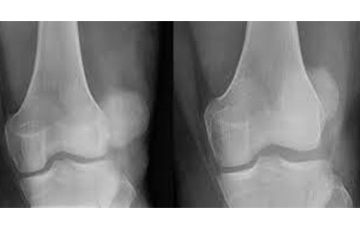
Trick knees and bunny hops!
What are luxating patellas?
Trick knees, floating knee caps, or as we call them luxating patellas are most commonly diagnosed in small or toy breed dogs, but are also less commonly found in cats as well. An owner typically notices a little skip or ‘bunny hop’ in their dog’s step. The dog may even run on three legs, holding one hind leg up, and then miraculously be back on four legs as if nothing has happened. Often your pet may have never limped or walked abnormally but one day yelps while running or holds one of their back legs up suddenly.
Patellar luxation is one of the most common orthopedic condition in dogs
The kneecap (patella) has slipped out of the smooth groove in which it normally rides up and down. It has slipped medially, which is to say towards the opposite leg, as opposed to laterally, which would be away from the dog entirely. With the patella dislocated (or luxated) medially, the knee cannot extend properly and stays bent. Hopefully, the patient will be able to slip the kneecap back where it belongs and be back to normal in only a few steps.
What causes this condition?
Luxating patellas can be congenital as well as traumatic. Cats are not as prone to congenital luxating patellas and are more commonly seen for traumatic causes of luxating patellas. In this blog we will cover this condition and how it pertains to dogs.
How are they diagnosed?
Luxating patellas can be found on physical examination of your pet, this is why yearly examinations are very important. Your Veterinarian will be able to palpate this abnormality when they put the hind legs through a range of motion. Radiographs will also show abnormalities diagnosing luxating patellas. The severity of this condition is rated on a grade scale from 1-4
Grade I: The kneecap can be moved out of place manually but will fall back into its natural position once the manipulator lets go.
Grade 2: Same thing except that the kneecap does not move back to its normal position when the manipulator lets go. These dogs are likely to progress to arthritis development and should be considered for surgery to prevent conformational damage. There is some controversy over whether grade 2 dogs should have surgery.
Grade 3: The patella is out of place all the time but can be manipulated back into its normal position manually (though it will not stay there).
Grade 4: The patella is not only out of place all the time but cannot even be manipulated back into place by hand. Such a dog has extreme difficulty extending his knees and walks with his knees bent virtually all the time. They will appear bow legged.
How does it affect my pet?
This luxated knee cap causes an alteration on the hind legs that bear alot of weight, in time, this leads to changes in the hips, long bones, and ultimately arthritis. How severe the changes are depends on how severe the luxation is (i.e., the grade as described above) and how long that degree of luxation has been going on. In time, the legs will actually turn outward with its muscles turning inward, making the dog bow-legged. Low grade luxation is not considered painful but after enough time as arthritis sets in, it does indeed become painful and may require surgical correction
How to manage your pet with luxating patellas:
- The first thing you should do for a dog diagnosed with a floating kneecap is help him achieve and maintain a healthy body weight. It’s just common sense that the heavier the dog, the more burden there will be on his knees. Optimal body weight for your dog means lots of lean muscle and a reduced amount of fat.
- Number two, it’s very important to keep your pet moving. Maintaining excellent muscle tone will help their body form a kind of cage around the knee which will keep the patella in place. The more toned the leg muscles are the more stable the kneecap will be. Building muscle is an extremely important part of reducing the clinical symptoms of a luxating patella.
- Thirdly, joint supplements are beneficial by decreasing inflammation in the joint. We, at Adobe Veterinary Center recommend Cosequin or Dasaquin. They can be purchased at our clinic or on our online pharmacy
- Surgical correction is usually indicated in dogs with a grade 2 luxation or higher. Dogs with Grade I luxations do not require surgical repair. Grade 2 patients may benefit from surgery and most often the owner is called upon to judge how big a problem the lameness is. A dog or cat with Grade 3 or 4 disease definitely should have surgery. Most Small Animal Veterinarians do not routinely perform these surgeries and you may be referred to an orthopedic surgeon for this procedure. 90% of pet owners are satisfied with the outcome of surgical repair of patellar luxation.







